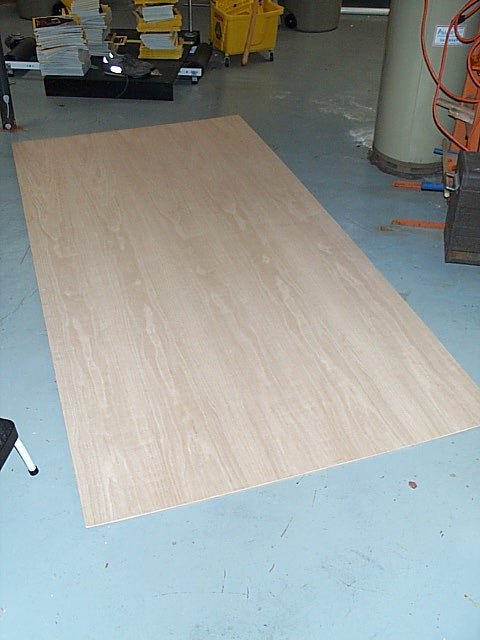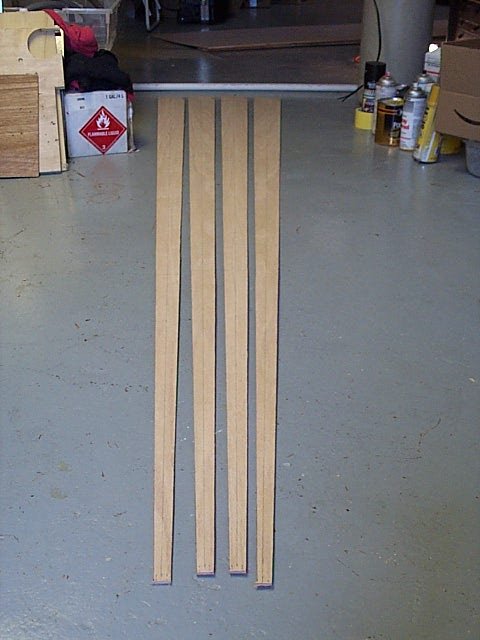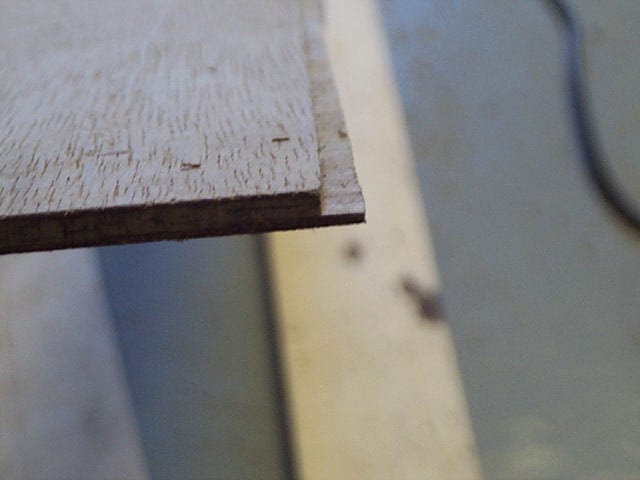Note that metric dimensions are provided in
the more comprehensive Construction Guide document, downloadable
via the Concept page of this article.
The Squarpent is made almost entirely from a single 4' x 8' sheet of
1/4" plywood (actually about 0.2"). About half the sheet is used for the
instrument and jigs; another instrument can be made from the rest of the
sheet! The prototype was made from oak plywood with two good (finished)
sides, exterior grade bonding between plys, at a cost of about $20 US for
the whole sheet. In general, any type of plywood may be used, but only
a better grade will be free from knots and voids.
It will be beneficial to have a long straight edge available for marking
the lines on the plywood to guide the cutting. There are several ways to
draw the necessary straight lines (each about 8' long), but perhaps the
simplest is to cut a thin (about 3" wide) strip from one long side of the
sheet; the factory cut edge of the strip makes a workable 8' straight edge.
In addition to the plywood, short pieces of wooden dowel are required,
in 1/2" and 3/4" diameters. Other required materials are wood glue (Elmers,
etc.), 5 minute epoxy, a suitable mouthpiece (start with a trombone / baritone
/ euphonium mouthpiece, and graduate to a real serpent mouthpiece later
if desired), steel wire (19 gauge approx.), masking tape, cotton swabs,
and polyurethane varnish.





